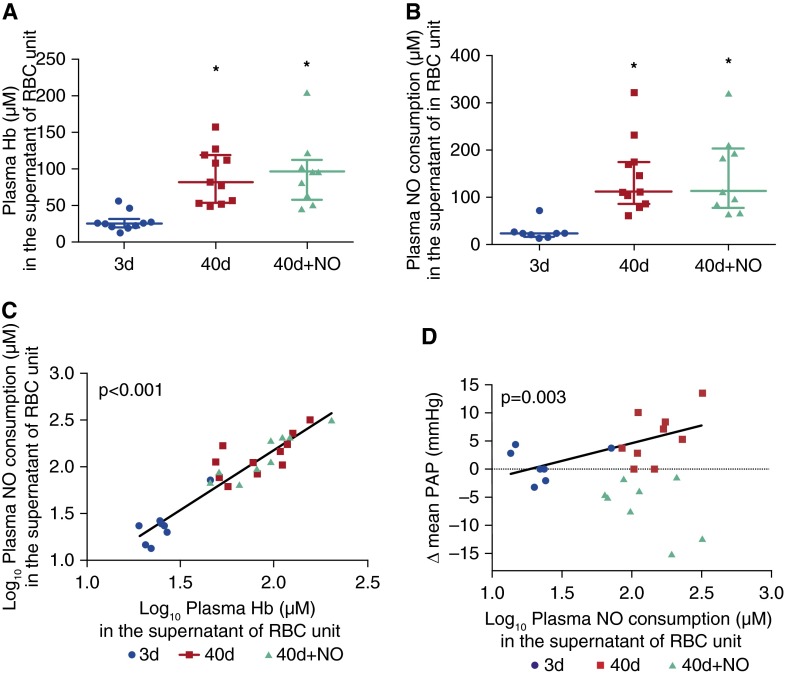Figure 4.
Plasma hemoglobin (Hb) and plasma nitric oxide (NO) consumption in the supernatant of red blood cell (RBC) unit, and changes of mean pulmonary artery pressure (PAP). (A) Supernatant Hb levels contained in the 40-day and 40-day+NO stored blood units are higher than those in the supernatant of the 3-day stored units (*P < 0.01). (B) Supernatant NO consumption is higher in the 40-day and 40-day+NO stored units as compared with the NO consumption of the 3-day stored units (*P < 0.01). (C) Supernatant NO consumption correlates with supernatant Hb levels from all RBC units (P < 0.001). (D) Supernatant NO consumption correlates with change of mean PAP after 3-day and 40-day challenges (P = 0.003). Despite high NO consumption levels of the supernatant of the 40-day+NO stored units, breathing NO decreases mean PAP. Data presented as median and interquartile range. In A and B, the P value was calculated with a Kruskal-Wallis rank test. In C and D, measurements of Hb in the supernatant and NO consumption were transformed to a log10 scale. Note that there are three fewer points in D compared with Figure 3D: two samples from the 3-day stored blood units and one sample from the 40-day stored unit were not obtained.

